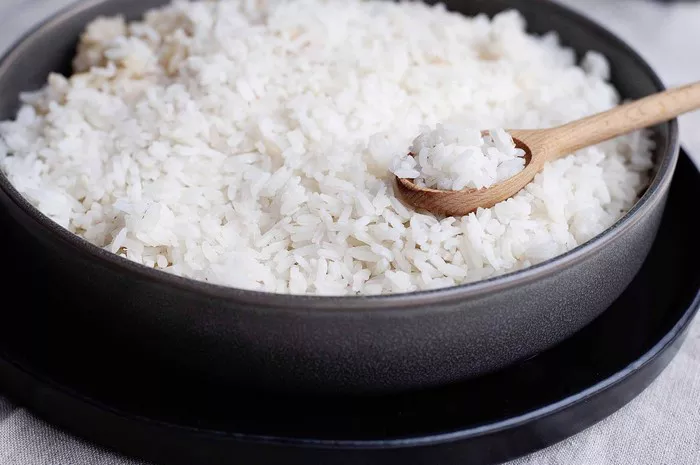Pre-diabetes is a condition where blood sugar levels are higher than normal, but not high enough to be classified as type 2 diabetes. It is a crucial stage in the spectrum of diabetes that provides an opportunity to reverse or delay the progression to type 2 diabetes. Diet plays a central role in managing pre-diabetes, and the choice of foods, particularly carbohydrates, can have a significant impact on blood sugar regulation. One of the common questions that arise among pre-diabetics is whether they can include white rice in their diet.
White rice is a staple food in many cultures around the world. It is consumed in various forms—boiled, steamed, fried, and as part of dishes like sushi, biryani, and risotto. However, it has a reputation for being a high-glycemic food, meaning it can cause rapid spikes in blood glucose levels. This characteristic makes white rice a controversial food item for individuals managing pre-diabetes. In this article, we will explore the nutritional properties of white rice, its effect on blood sugar, and whether it can be safely included in a pre-diabetic diet.
Understanding Pre-diabetes and Blood Sugar Control
Before delving into the specifics of white rice, it is essential to understand pre-diabetes and how it affects the body. Pre-diabetes occurs when the body’s ability to process glucose, or sugar, is impaired. Insulin, the hormone responsible for transporting glucose into cells, is either not produced in sufficient amounts or the body becomes resistant to it. As a result, glucose remains in the bloodstream for longer periods, leading to elevated blood sugar levels.
For individuals with pre-diabetes, the goal is to prevent the progression to type 2 diabetes. Lifestyle changes, particularly dietary modifications, play a critical role in managing blood sugar levels. Diets that are high in refined carbohydrates and low in fiber can cause rapid increases in blood sugar, putting stress on the pancreas and worsening insulin resistance.
The Nutritional Composition of White Rice
White rice is a refined grain, meaning it has undergone processing to remove the outer bran and germ layers, leaving behind the starchy endosperm. This process reduces the fiber content and removes essential nutrients such as B vitamins, iron, and magnesium. As a result, white rice is often considered a “empty-calorie” food, providing little nutritional value beyond carbohydrates.
A typical serving of white rice (1 cup, cooked) contains the following:
- Calories: 200-250
- Carbohydrates: 45 grams
- Protein: 4 grams
- Fat: 0 grams
- Fiber: 0.5 grams
- Glycemic Index (GI): 70-72
The glycemic index (GI) is a measure of how quickly a carbohydrate-containing food raises blood sugar levels. Foods with a GI of 70 or higher are classified as high-GI foods, meaning they cause a rapid increase in blood sugar levels. This is a key consideration for pre-diabetics, as high-GI foods can exacerbate insulin resistance and lead to spikes in blood glucose.
White Rice and Its Effect on Blood Sugar
When a person consumes carbohydrates, their digestive system breaks them down into glucose, which enters the bloodstream. The more quickly a food breaks down into glucose, the higher the glycemic response. White rice has a high glycemic index, meaning it is rapidly digested and absorbed, causing a sharp increase in blood sugar levels.
For individuals with pre-diabetes, consuming foods with a high glycemic index can lead to several issues:
Insulin resistance: Frequent spikes in blood sugar can worsen insulin resistance, as the body struggles to keep up with the increased demand for insulin.
Increased inflammation: Chronic elevated blood sugar levels can contribute to inflammation, which is linked to the development of type 2 diabetes and cardiovascular disease.
Blood sugar swings: The rapid rise in blood sugar following the consumption of white rice can be followed by a quick drop in blood sugar, leading to feelings of fatigue, irritability, and hunger.
For individuals with pre-diabetes, maintaining stable blood sugar levels throughout the day is critical. This can be achieved by eating foods that cause a slower, more gradual rise in blood sugar. Foods with a low to moderate glycemic index, such as whole grains, legumes, and non-starchy vegetables, are generally preferred.
Alternatives to White Rice for Pre-diabetics
Given the potential for white rice to cause blood sugar spikes, pre-diabetics may wonder if there are better alternatives. Fortunately, there are several options available that can provide similar texture and flavor without the same impact on blood glucose levels.
Brown Rice: Brown rice is a whole grain that retains the bran and germ layers, making it higher in fiber and nutrients compared to white rice. The fiber content in brown rice helps slow the digestion and absorption of carbohydrates, leading to a more gradual rise in blood sugar. Brown rice has a lower glycemic index (around 50-55) compared to white rice, making it a better choice for those with pre-diabetes.
Quinoa: Quinoa is a highly nutritious, gluten-free grain that is rich in protein, fiber, and essential minerals like magnesium. It has a low glycemic index (around 53) and can be a great alternative to white rice for pre-diabetics. Quinoa is also a complete protein, meaning it contains all nine essential amino acids.
Cauliflower Rice: For those looking to reduce carbohydrate intake, cauliflower rice is an excellent low-carb alternative to white rice. It is made by grating cauliflower into small rice-like pieces and can be sautéed or steamed. Cauliflower rice is low in calories, high in fiber, and has a negligible effect on blood sugar levels.
Barley: Barley is another whole grain that is high in fiber and has a low glycemic index (around 28-30). It can be used as a substitute for white rice in a variety of dishes, providing a nutty flavor and chewy texture.
Bulgur Wheat: Bulgur wheat is made from cracked wheat and is a whole grain that retains its fiber content. It has a low glycemic index (around 48) and is a good source of plant-based protein. Bulgur can be used in place of rice in pilafs, salads, and grain bowls.
Sweet Potatoes: While not a direct substitute for rice, sweet potatoes are a nutrient-dense carbohydrate that has a lower glycemic index than white rice. They are rich in fiber, vitamins, and antioxidants and can be included in meals that traditionally feature rice.
How to Safely Include White Rice in a Pre-diabetic Diet
While white rice is not the best choice for pre-diabetics due to its high glycemic index, it is not necessarily off-limits. The key to including white rice in a pre-diabetic diet is moderation and strategic pairing with other foods that can help balance blood sugar levels. Here are some strategies for safely including white rice in a pre-diabetic meal plan:
Portion Control: The amount of white rice consumed is crucial. A small serving (1/4 to 1/2 cup cooked) can provide a reasonable amount of carbohydrates without overwhelming the blood sugar system. This is especially important when consuming high-GI foods like white rice.
Pair with Protein and Healthy Fats: Pairing white rice with protein-rich foods (chicken, fish, tofu, legumes) and healthy fats (avocados, olive oil, nuts) can help slow the absorption of glucose into the bloodstream. These macronutrients help stabilize blood sugar and reduce the glycemic impact of the rice.
Add Fiber: Fiber helps slow the digestion of carbohydrates and promotes better blood sugar control. Adding fiber-rich vegetables (like leafy greens, bell peppers, or broccoli) to a white rice dish can help lower its glycemic response.
Balance with Low-Glycemic Foods: To offset the high glycemic index of white rice, it is important to include other low-GI foods in the same meal. Non-starchy vegetables, whole grains, and legumes are excellent choices to balance the meal and keep blood sugar levels stable.
The Importance of Whole Grains in Pre-diabetes Management
While it is possible to occasionally consume white rice in a pre-diabetic diet, whole grains should be prioritized for long-term blood sugar management. Whole grains such as brown rice, oats, quinoa, and barley provide more fiber, vitamins, and minerals than refined grains like white rice. The fiber in whole grains helps regulate blood sugar levels, improve insulin sensitivity, and reduce the risk of heart disease—common comorbidities associated with pre-diabetes.
Several studies have shown that diets rich in whole grains are associated with a lower risk of developing type 2 diabetes. Whole grains are also beneficial for weight management, as their fiber content promotes satiety and reduces overall calorie intake.
Conclusion: Moderation is Key
Pre-diabetes is a serious condition, but it is reversible with proper diet and lifestyle changes. While white rice is not the best option for individuals managing pre-diabetes, it is not necessary to eliminate it entirely from the diet. The key is moderation—small portions of white rice, when paired with fiber, protein, and healthy fats, can fit into a balanced meal plan.
However, for long-term blood sugar control, it is important to prioritize whole grains and other low-glycemic foods that provide better nutritional value and have a smaller impact on blood sugar. By making thoughtful food choices and focusing on a balanced diet, individuals with pre-diabetes can effectively manage their condition and reduce the risk of developing type 2 diabetes.
Incorporating a variety of whole grains, vegetables, lean proteins, and healthy fats into daily meals is a sustainable strategy for managing pre-diabetes. It is always advisable to work with a healthcare provider or a registered dietitian to create a personalized diet plan that meets individual needs and helps control blood sugar levels.
Related topics:
What are the Best Fruits for Prediabetes


























